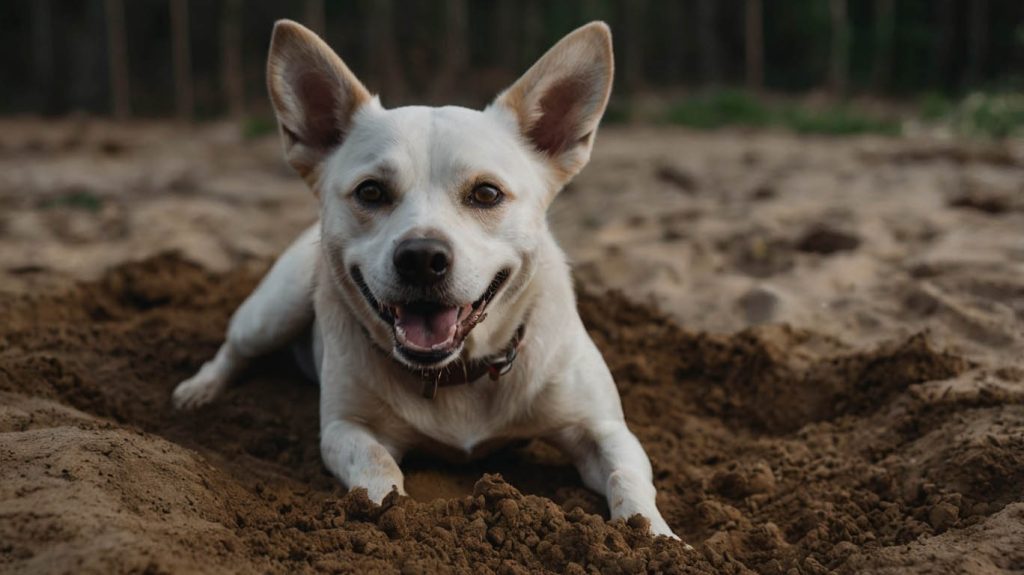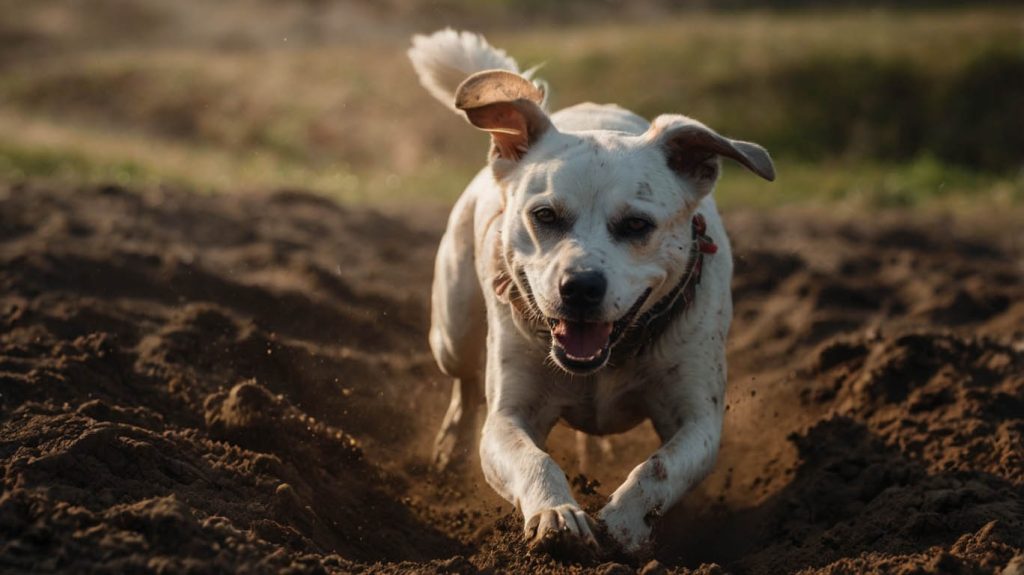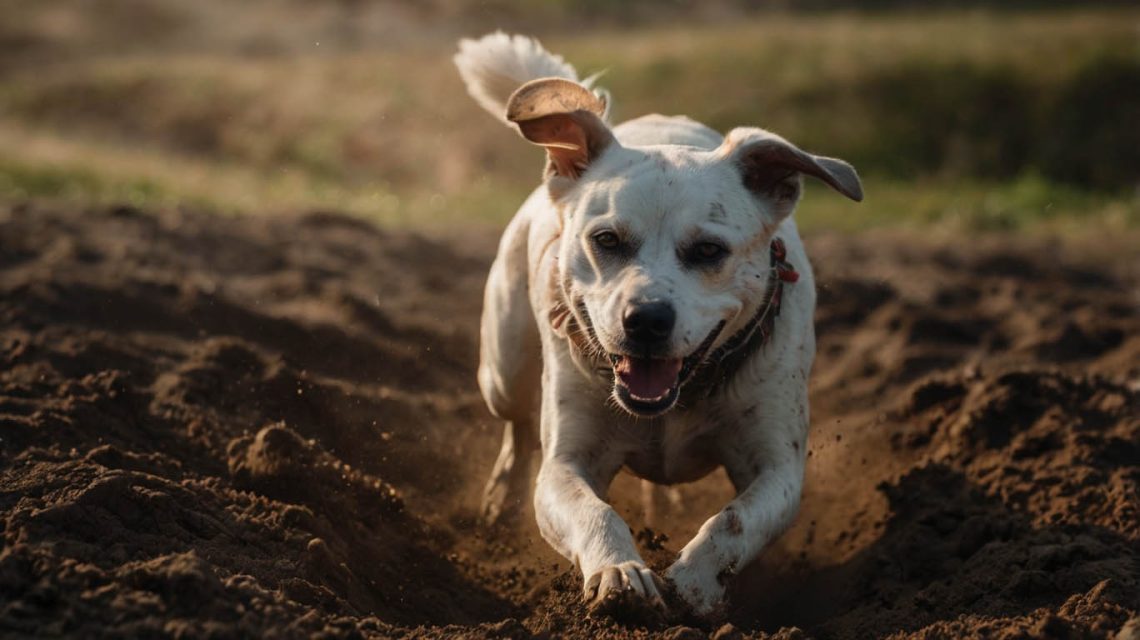How to Stop a Dog From Digging: Your Ultimate Guide to a Beautiful Yard
The story is a familiar one for many dog owners: you look out your window at what used to be a lovely lawn, only to see a landscape of craters and upturned dirt, with your happy dog proudly sitting in the middle of their newest excavation. This frustrating scene often leads to the urgent question, “how to stop a dog from digging?” While your first instinct might be to scold them, it’s crucial to understand that digging is a deeply ingrained, natural canine behavior. It’s not a “bad” habit; it’s a form of communication.
This comprehensive guide will walk you through the entire journey of solving your dog’s digging dilemma. First, we will play detective and uncover the real reasons behind the behavior. Then, we will provide a complete action plan with positive, humane, and effective strategies. Consequently, you will learn to work with your dog’s instincts, not against them, to reclaim your yard and build a stronger bond.
The “Why”: Decoding the Reasons You Need to Stop a Dog From Digging
First and foremost, before you can address the behavior, you must understand the motivation behind it. A digging dog is trying to tell you something. Therefore, the first step in learning how to stop a dog from digging is to identify the root cause.

Boredom and Excess Energy
This is, by far, the most common culprit. A dog without sufficient physical exercise and mental stimulation will invent their own job, and for many, that job is landscaping. Digging is a fantastic and fun way for a dog to burn off pent-up energy.
Instinctual Behavior and Breed Traits
For many breeds, digging is literally in their DNA.
- Terriers: Breeds like Jack Russells and Dachshunds were originally bred to “go to ground” to hunt vermin. Their instinct to dig for prey is powerful.
- Denning Breeds: Northern breeds like Huskies were bred to dig dens for shelter and to keep cool. This instinct to create a comfortable, cool spot to lie in is still very strong.
Hunting for Prey
If the digging is concentrated at the base of trees or along pathways, your dog may be hunting for moles, gophers, or other small critters they can hear or smell underground. This is a highly rewarding, self-reinforcing behavior.
Seeking Comfort or Shelter
On a hot day, a dog will dig to unearth the cool, damp soil underneath the surface to create a comfortable place to lie down. Conversely, in cold or windy weather, they may dig a shallow pit for protection.
Anxiety or Escape Attempts
If the digging is focused along a fence line, it’s often a sign of anxiety (like separation anxiety) or an attempt to escape the yard to get to something (or away from something, like a loud noise). This is a more serious issue that requires a deeper behavioral approach.

Your Action Plan: How to Stop a Dog From Digging Effectively
Once you have a good idea of why your dog is digging, you can implement a targeted strategy. The most successful approach is a combination of management and training.
Increase Physical and Mental Exercise
This is your first line of defense, especially for boredom-based digging.
- Quality Exercise: A tired dog is a good dog. Go beyond a simple leash walk. Incorporate games of fetch, flirt pole sessions, or trips to the dog park.
- Mental Enrichment: Mental exercise is just as tiring as physical exercise. Use puzzle toys, snuffle mats, and daily training sessions to work their brain. For more ideas, explore our internal guide on [Canine Enrichment Ideas to Banish Boredom].
Create a Designated “Digging Zone”
This is the single most effective positive reinforcement strategy for how to stop a dog from digging in your flower beds. You are not stopping the behavior; you are redirecting it to an appropriate location.
- Choose a Spot: Select an area of your yard where you are happy for your dog to dig. A corner behind a shed is often a good choice.
- Build It: You can build a simple frame with wood or use a child’s sandbox. Fill it with a mixture of sand and loose soil.
- Make it a Treasure Chest: This is the key step. Bury your dog’s favorite toys, high-value chews, and some tasty treats in the digging zone.
- Show Them: Lead your dog to the box and encourage them to dig for the “treasure.” When they do, praise them enthusiastically! Make this the most fun place in the entire yard.
- Redirect: If you catch them digging elsewhere, cheerfully interrupt them with a “Let’s go!” and lead them back to their special digging spot.
Management: How to Stop a Dog From Digging When You’re Not Watching
- Supervision is Key: Do not leave your dog unsupervised in the yard while you are still working on this issue. Supervised time allows you to redirect them the moment they start to dig in the wrong place.
- Use Safe Deterrents: You can make unwanted digging spots less appealing. Burying their own feces in the hole can be effective. Some owners have success with burying flat rocks just under the surface or using citrus peels, as most dogs dislike the smell. Be cautious with cayenne pepper or other spicy deterrents, as these can cause irritation to your dog’s eyes and nose.
Common Mistakes to Avoid When Trying to Stop a Dog From Digging
Punishment is rarely effective and can damage your relationship with your dog. According to The Humane Society of the United States, understanding the cause is far more effective than punishing the behavior.
- Don’t Punish After the Fact: If you find a hole hours after your dog dug it, scolding them is useless. They will not be able to connect your anger with the action they took long ago. This will only create fear and confusion.
- Don’t Yell: This will likely just be seen as you “barking” along with them, which can be exciting and may even encourage the behavior.
Conclusion: Working With Your Dog, Not Against Them
Learning how to stop a dog from digging is a process of translation. Your dog’s holes are not acts of destruction; they are clues about their needs. By identifying the root cause—whether it’s boredom, instinct, or a hunt for comfort—and providing a positive, appropriate outlet for that behavior, you can restore your yard and strengthen your bond. It’s a journey that requires patience, consistency, and a little bit of creative problem-solving.


